AZZA Genesis 9000 Full Tower PC Case Review
Installing Hardware into the Genesis 9000
Reminder: AZZA claims that the Genesis 9000 is fully capable of handling not just one radiator, but two radiators inside of this full tower chassis. AZZA states that we can install a quad 120mm radiator up at the top of this chassis, as well as mount a second dual 120mm radiator on the bottom. I just so happen to have both of these types of radiators that I use on my primary computer. One radiator that I am using happens to be a quad 120mm (480mm) triple row, dual pass radiator from XSPC. Alongside that is a dual 120mm (240mm) single row, dual pass radiator from Swiftech.
So, let’s get on with the installation and find out, shall we?
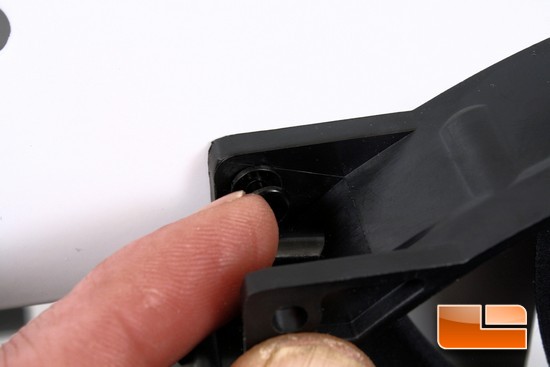
Now, before we do any radiator installation to the upper part of the Genesis 9000 chassis we need to remove the two included 230mm fans. AZZA uses small push pin types of locks; all we need to do is grab a hold of the inner pin and slide up, then remove the entire push pin out of the fan mount.
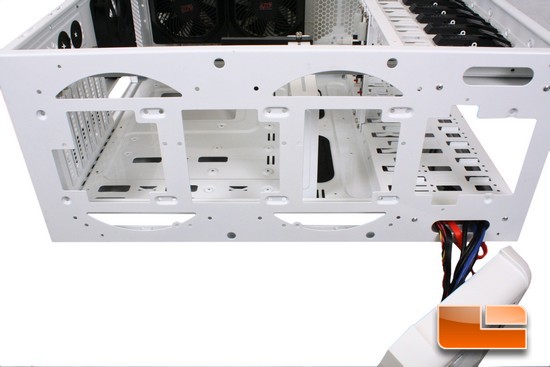
Here is the top of the Genesis 9000 chassis with both 230mm fans removed. Counting the squares, and amount of fan mounting holes (120mm fan mounting holes), we can see that this chassis is capable of handling a quad 120mm radiator. But the question is, will the Genesis 9000 chassis be able to handle one of the larger types of quad 120mm radiators, the XSPC? There is only one way to find out, and that is to check it out first hand.
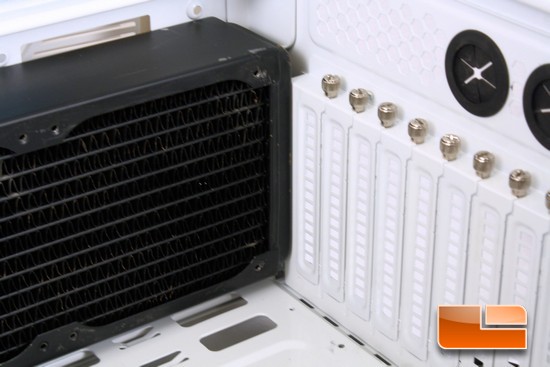
And the answer is, no. Unfortunately, the quad 120mm, triple row, dual pass radiators like the XSPC I am currently using, have a typical thickness of 2.25; the Genesis 9000 chassis can only use radiators that are only 2 thick, maximum. So basically, it can handle radiators that are single or utilize dual rows that are smaller than roughly 50mm, or 2 inches thick.
To be honest, I was not expecting the XSPC radiator I was attempting to install into the Genesis 9000 chassis to fit, anyway. That is because this is a rather large radiator type and there are only few chassis that can even mount this type of radiator.
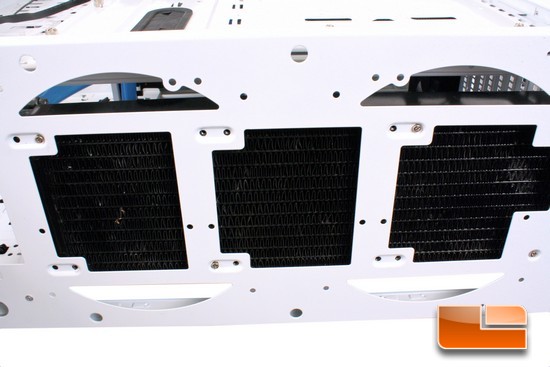
Since the quad XSPC 120mm radiator was not going to fit, I had to go dig out my spare triple 120mm Swiftech radiator and install that radiator into the Genesis 9000 chassis. Just as I figured, the installation of this smaller radiator went without any serious problems. Now, since the radiator gets mounted on the bottom side (inside) of the Genesis 9000 chassis, I decided to use four of the smaller chassis screws to hold the radiator in place to make installation of the fans easier.
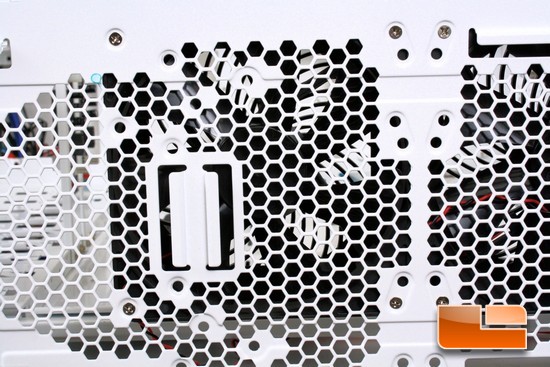
In order for us to install a PSU in the front of the chassis, and install a dual 120mm radiator to the bottom of the chassis we need to remove the 2 included bottom 140mm fans. First, the entire bottom bezel has to be removed, then locate the 4 (8 total) standard fan screws and remove them in order to remove the fans.
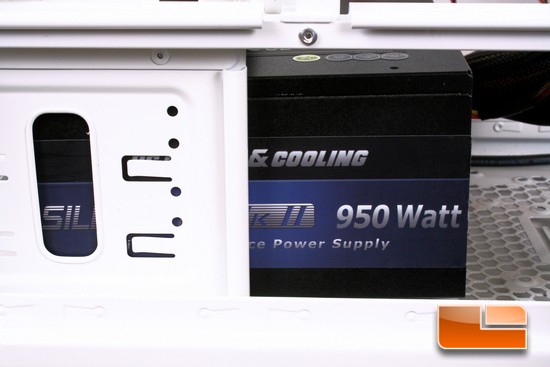
After removing the lower 140mm fans, I can now install the PSU and the bottom radiator. I opted to mount the PSU up front vs. to having it mounted up in the back of the chassis.
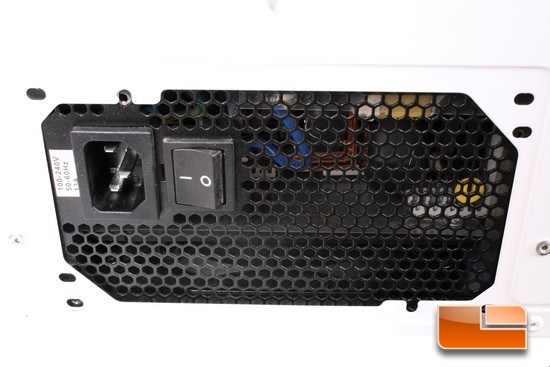
The PSU mounting holes did align right; it just required a little bit of finessing to fully secure the PSU to the chassis.
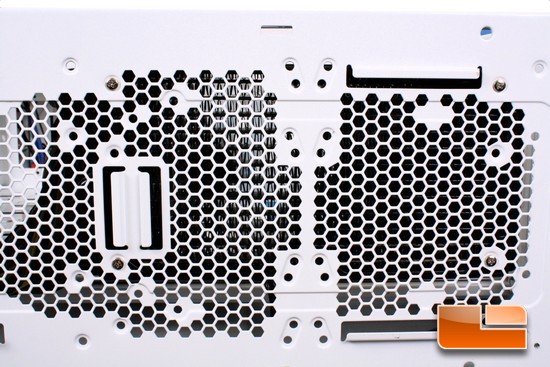
Here I am getting the dual 120mm radiator mounted on to the Genesis 9000 chassis. So far, installation is going accordingly to plan; I did not experience any major obstacles pertaining to my unique computer configuration.
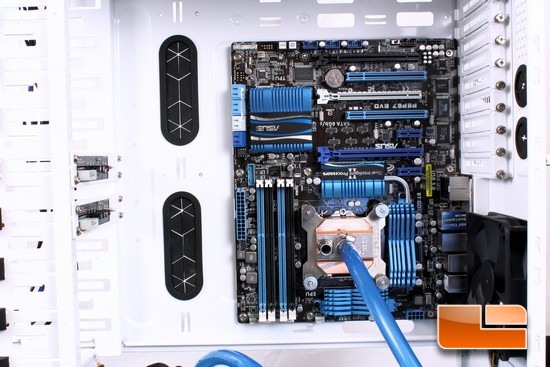
Since I have gotten both of my radiators installed into the Genesis 9000 chassis, it is time for me to install the motherboard.
Now this is one area I will have to suggest that you use either spare chassis screws and thread it into each of the mounting holes, or get yourself a #6 by 32 thread tap and clean out the holes that way. AZZA did use a lot of paint on the Genesis 9000 chassis which, in turn, had paint run into each of the mounting holes making threading the required standoffs/screws a bit harder. Not a major problem but it does need to be mentioned.
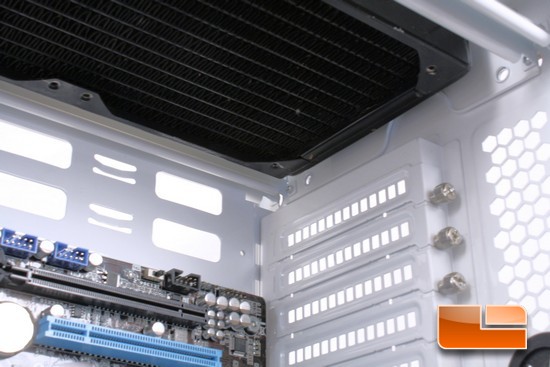
Since I switched out to the smaller single row dual pass triple 120mm Swiftech radiator, I have plenty of room from the bottom of the radiator to the top of the PCI expansion ports.
I think you could get away with a dual row dual pass style of radiator, if you make sure that it is no thicker than 50mm, or 2 inches thick.
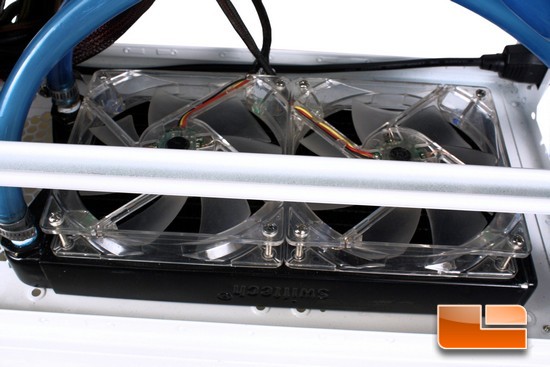
A quick look at the bottom dual 120mm radiator shows plenty of room available on all sides of this radiator.
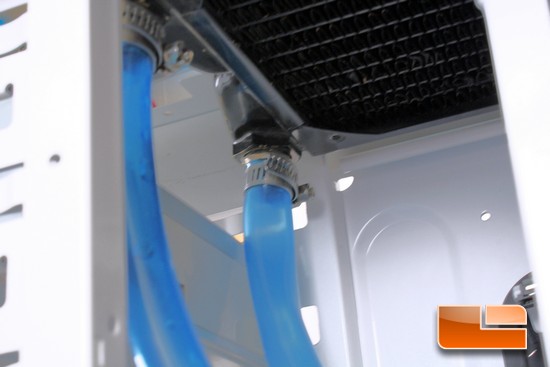
If you plan on using a triple radiator, you will be losing the very top 5.25 bay, providing that you are using one of the smaller sized Blu RAY/DVD/CD ROM drives. If you plan on using a quad radiator, you will be losing the top two 5.25 bays, unless you get creative on your barbs and hoses.
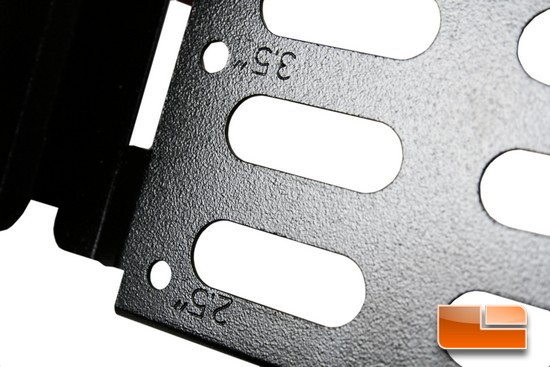
Since most of the major items are installed in to the Genesis 9000 chassis, it is time for me to finish up the installation with my HDDs and SSD. The HDD carriers can accommodate both a 3.5 and 2.5 HDD/SSDs.
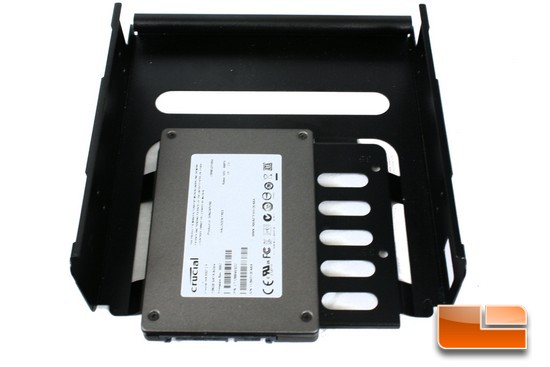
Here is the SSD fully installed into the HDD carriers. Since SSDs and 2.5 laptop drives have the same bolt configuration, I wont need to show you the mounted 2.5 HDDs.
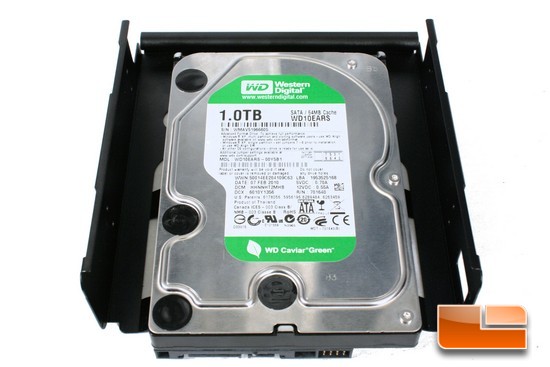
Here the 3.5 HDD installed into the HDD carriers.
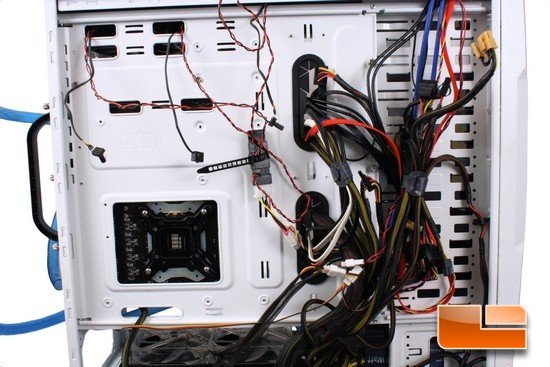
This is how I decided to run all of my extra PSU wires into the Genesis 9000 chassis; I will have to admit that wire-management with this chassis was a pretty easy task. And, those two words just do not belong in the same sentence with each other: easy, and wire-management.
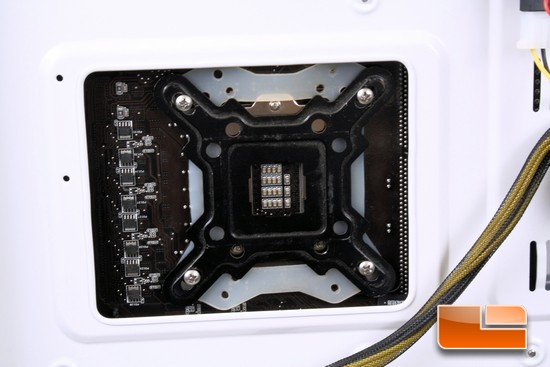
Just as I suspected, the CPU cutout is a bit on the small side. So the use of this CPU cutout will be determined by the layout of your motherboard and possibly the type of motherboard as well.
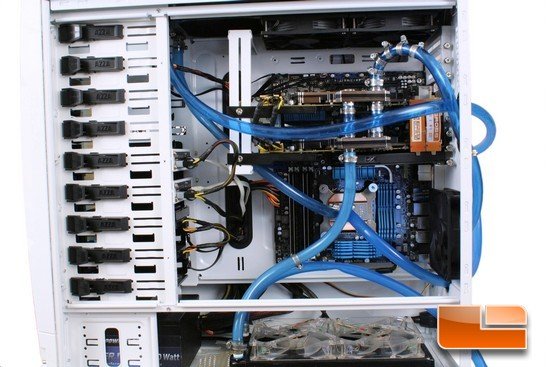
That is what I call a clean installation of my computer components.
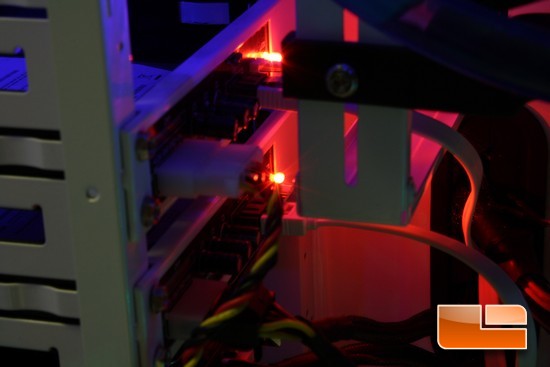
As I mentioned previously, there are small red LEDs on the hot swappable drive interfaces; this is to inform us if there is, or is not a drive installed here.
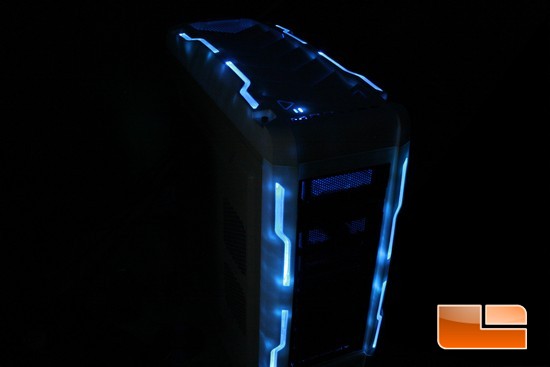
Here is what the AZZA Genesis 9000 chassis looks like all lit up at night. Other than the blue LEDs bleeding through the bezels this is one sexy looking chassis.

Comments are closed.